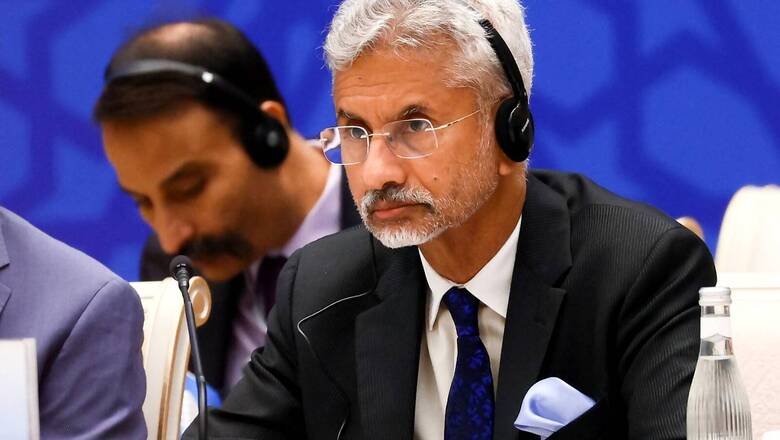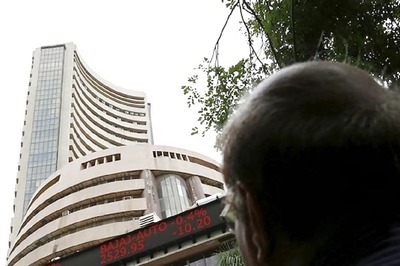
views
External Affairs Minister S Jaishankar has repeatedly emphasised the importance of the Chabahar Port in the inter-regional and Eurasian connectivity architecture, first at the Shanghai Cooperation Organisation (SCO) Foreign Ministers’ conference and then again at the recent observance of the “Chabahar Day”. The China-Pakistan Economic Corridor (CPEC) for trans-regional trading was proposed by Pakistan’s Foreign Minister, while India lobbied for the Chabahar Port to serve as the chief trade route to Central Asia, at the recent SCO Foreign Ministers’ Meet.
Jaishankar shared the table with China’s Wang Yi, Pakistan’s Bilawal Bhutto, Russia’s Sergey Lavrov and the leaders from Central Asian Countries while he underlined the potential of the Chabahar Port in Iran for the economic future of the grouping. India also welcomed Iran’s inclusion in the SCO, a process that is expected to begin at the Samarkand Summit later this year.
Chabahar & India’s Connectivity Outreach to Eurasia
The Chabahar Agreement, also known as the trilateral agreement, was signed by India, Iran, and Afghanistan in May 2016 during Prime Minister Narendra Modi’s visit to Iran. Its objective was to develop the Iranian port of Chabahar as a shipping hub with rail links that connected India to Afghanistan through Iran, bypassing Pakistan. It was designed as a win-win agreement and was expected to benefit the countries economically. It provided Afghanistan, a landlocked country, with access to global shipping routes. For Iran, the agreement meant investments and economic reintegration, something the country desperately needed following years of tough international sanctions. Furthermore, it provided India with a means of bypassing Pakistan in its westward pursuit and also keeping a check on the growing China-Pakistan nexus.
The Chabahar port, on the southern coast of the energy-rich country, is conveniently accessible from India’s western coast and is increasingly regarded as a rival to Pakistan’s Gwadar Port, which is just 80 kilometres away from Chabahar. Since Iranian President Hassan Rouhani inaugurated the first phase of the Chabahar Port in December 2017, it has developed into a commercial transit hub for the region and a more stable and economic alternative for landlocked countries to reach India and the global market.
When asked about India’s interest in developing the Chabahar Port, Jaishankar responded that India is interested because if Iran develops more ports, connectivity from those ports to Iran’s northern regions will improve. It makes more land-based commerce channels available, which are more effective than these sea-based routes. Being more competitive in the flow of goods is therefore essential for economic advancement today. For India, it creates two new trading routes: one to Central Asia and the other to Caucasus.
After the Suez Canal blockade in 2021, the need to establish alternate commercial routes between Europe and Asia became imperative. The same year also saw Jaishankar proposing that the Chabahar Port be included in the International North-South Transport Corridor (INSTC) for furthering regional connectivity. This paints a clear picture of how India is developing its routes to all of Central Asia, including Turkmenistan, Uzbekistan, Kazakhstan, Kyrgyzstan, and Tajikistan, as well as to Europe.
The Chabahar Port is a crucial endeavour for India to provide sea access to Afghanistan. The first shipment of goods from India to Afghanistan was sent through the Chabahar Port in 2017, and on 24 February 2019, Afghanistan bypassed Pakistan to send its first shipment of exports to India through the Chabahar Port. As a result, the port has become a more affordable and reliable route as well as a commercial transit hub for the region.
Chabahar’s development was crucial for India’s economic as well strategic interests. Access to the port has given India’s West Asian Policy a stronger strategic push. It also assists in furthering India’s soft power diplomacy. A notable example would be the role the Chabahar Port played in distribution of humanitarian aid during Covid-19.
India also utilised it to transport 75,000 tonnes of wheat as food aid to Afghanistan in 2020. Strategically, the Chabahar project has offered India access to a port just 90 kilometres from Gwadar, a port critical to China’s Belt and Road Initiative and a symbol of China’s increasing influence in India’s neighbourhood. Notably, this marked the first time India has begun to run a port outside of its borders.
Conclusion
As India gears up to take on the SCO presidency next year, fundamental changes are underway especially with Iran’s inclusion as a full member. India and Iran both support connecting South Asia and Europe through the INSTC. The SCO framework is anticipated to place more focus on connectivity through Chabahar in the near future. The Chabahar Port has shown its potential to develop into a transit centre for Central Asia and Eurasia at a time when countries in Asia, especially landlocked ones, are reimagining their connectivity outlook.
The project has encountered several difficulties, largely as a result of the international sanctions placed on Iran because of its nuclear programme and the coercive policy adopted by the Trump administration. However, the recent reaffirmation by India and Iran of their commitment to continue working together on the development of the Chabahar Port as a transit centre for the region, including Central Asia, has rekindled interest among the general public in what the future holds for Chabahar.
Esha Banerji specialises in Defence and Strategic Studies at the Savitribai Phule Pune University. The views expressed in this article are those of the author and do not represent the stand of this publication.
Read all the Latest Opinion News and Breaking News here

















Comments
0 comment